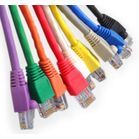SmartWatch XP
- Emergency Response
- Nurse Call Systems
- Fire Alarms
- Security Systems
- Bulding Management
- Restaurants
- Gaming Machines
SmartWatch XP represents the single most significant achievement in the history of wireless messaging, marking the beginning of the next phase of evolution for messaging systems.
SmartWatch XP is a messaging platform designed for Microsoft Windows ® enabling the seamless integration of all forms of text messaging. Whether you are dealing with an on site paging system, Short Message Service, email or DECT, SmartWatch XP can deliver messages effortlessly.
SmartWatch XP also integrates with a myriad of third party systems such as fire alarms, security systems, nurse call and building management systems enabling alarms to be directed immediately to the appropriate staff. In addition, messages may be initiated from any PC on the network or via a telephone interface.
Client Server Architecture
SmartWatch XP is a true client/server application with dynamic, real time updating of all database modifications from any PC on your network. By utilizing TCP/IP, clients may be connected to the server via the LAN, WAN or remotely via the Internet. As each client makes modifications to the centralized database these alterations are reflected instantaneously to all clients. This approach enables any PC (with sufficient security clearance) to make modifications to any aspect of the system, regardless of whether they are adding pagers, booking reminder messages or even performing maintenance.
Message Dispatch
Messages may be dispatched directly from PC’s either via the SmartWatch XP client software or directly from your email application. Users simply select who they wish to contact from a list of recipients (or groups), type in their messages and click on send. SmartWatch XP then determines how to send the message. Access to on site pagers, citywide pagers, DECT handsets and mobile phones occurs transparently to the operator. And being a non-dedicated application you can happily utilise your PC for other applications.
PBX Interface
A voice prompted telephone interface enables staff to send messages directly to recipients without the assistance of an operator. The user is guided through the entire paging process via a series of voice instructions. In addition, users may send a combination of predefined alphanumeric messages and numeric digits (such as ‘Call extension: 432’ or ‘Cardiac Arrest Room 432’). Messages may be prioritized for emergency conditions.
Email Integration
Email has become the communications medium of choice for the business community. Around 40% of the average work force is mobile, and virtually all professional people have a mobile phone or pager. SmartWatch XP embraces the email phenomenon enabling email messages to be sent directly to wireless recipients. In addition, SmartWatch XP is able to send messages directly to email. For example, when an alarm is activated it could send the message to a DECT handset and a copy of the alarm to your email address.
Alarm Monitoring
SmartWatch XP may be interfaced into numerous third party alarm systems enabling virtually any aspect of your premises or alarm conditions to be monitored. Coupled with SmartWatch XP’s unique rostering and escalation system alarms may be dispatched to the appropriate staff depending on the time of the day, and which day of the week the alarm was activated. Alarm information may be sourced directly from ‘intelligent’ serial or TCP/IP connections or via low level alarm inputs. In addition, all alarms are logged to the hard disk for future reference and should an alarm not be resolved then SmartWatch XP can escalate the alarm to another recipient.
City Wide Paging
SmartWatch XP has been designed to communicate with commercial paging / SMS carriers to send messages directly to citywide pagers and mobile phones. By employing intelligent queuing techniques, SmartWatch XP can ‘batch’ calls together reducing outbound call costs. Furthermore, multiple SmartWatch XP systems can be networked together (via direct connections or via the Internet) to create ‘virtual’ wide area networks. This is ideally suited for sites that have multiple campuses and require contacting staff roaming between each of their sites.
Recipient Management
SmartWatch XP makes recipient maintenance a breeze for administrators. Simply enter in the name of the recipient, their contact address and select how to send the message to them.
All operations such as new, delete and save are situated on a single screen ensuring that all operations are only one click away.
Rostering Management
The rostering facility within SmartWatch XP enables different staff members to be contacted depending on what time of the day and which day of the week a call is placed to them. The rostering system is identical to traditional manual rostering. Rosters are highlighted in various colours so you can quickly see who is rostered on for a particular shift. When a call is placed to a roster (regardless of the origin) SmartWatch XP looks up which staff are on the roster schedule and then contacts all staff that are assigned to the shift.
Group Management
It is often a requirement to notify more than one person at the same time. A typical example of this would be a fire alarm where, several people need to be informed simultaneously.
Groups may consist of any combination of pagers, DECT handsets, mobile phones or citywide pagers.
Adding members to a group is as simple as clicking on the add recipients button and dragging the required recipients into the group.
Escalation Management
Occasionally it is a requirement that a call unconditionally must be answered - if it is not then it could mean the difference between life and death.
Under these circumstances SmartWatch XP employs escalation management and priority queuing. The escalation management enables a sequence of staff to be contacted, at varying time intervals, until the call is answered. In addition, the priority system ensures that the call is sent immediately, by moving it to the front of the queue.
Email Integration
Email has become the medium of choice for the business community. There is a clear need for mobile email services that staff can employ and configure to match their individual messaging needs.
SmartWatch XP is both an email client (able to send emails) and an email server (able to receive email for dispatch to mobile recipients).
Mobile email services take advantage of the ease with which mobile users can be reached. The service monitors a user’s mailbox, detects the arrival of new email and notifies the user by sending a message to the user’s phone, pager or DECT handset. In addition, any message that is generated by SmartWatch XP can be easily dispatched as an email.
Alarm Monitoring
SmartWatch XP can monitor a myriad of alarms such as door alarms, duress systems, building management systems, fire alarms and security systems. Alarms may be generated from virtually any source, either via a telephone line (Med-Call dialler units via an SCU Receiver), a direct serial connection (e.g. SmartWire and SmartLine), over TCP/IP or via Alarm Interface Modules.
Once an alarm is triggered a message describing the alarm, its location and any other required information, will be instantly sent to the appropriate staff members. SmartWatch XP provides a full suite of rostering and call escalation capabilities that enables the system to determine which staff to page, depending on what time of the day the alarm was triggered.
All alarms are logged to the hard disk providing confirmation of when, and to whom an alarm was sent. Furthermore, alarms may be sent to any combination of pagers, email addresses, DECT handsets and mobile phones.
High Level Interfaces
One of the primary benefits of SmartWatch XP is it’s inherit ability to be interfaced into third party systems. The ‘Generic Input’ interface inspects a serial data stream and searches for particular keywords.
This facility enables it to communicate with virtually all alarm systems that maintain a real time log.
Should a keyword exist in the data stream then SmartWatch XP may be configured to extract sections of the text to be sent to recipients.
In addition to the ‘Generic Input’ interface several custom interfaces are also available. The two most predominant interfaces are the Nursecall and the gaming interfaces.
SmartWatch XP enables you to establish a series of zones (wards in a hospital environment) so that you can assign staff to service particular areas within your premises.
Whenever a call comes in from a particular zone, SmartWatch XP analyses which staff are assigned to the area, and if they are available, SmartWatch XP will contact them.
Staffing levels may be adjusted either automatically based on a roster schedule or manually by the staff on duty.
Reporting and Statistical Analysis
If there were one single ‘buzz’ word that has governed the past decade it would be accountability.
Paging is one of the primary forms of communication within your organization – it is essential to be able to review and examine the paging traffic on your system.
The reporting facilities available in SmartWatch XP provide management with the ability to:
- Review response times to alarms.
- Solve disputes on when and to whom messages were sent.
- Track messages generated from particular sources – you can see which departments are busy.
- In the event of litigation you can easily review what happened during a particular time period.
- On screen graphical analysis allows management to review peak periods within your premises.
Specifications & Features
|
Recipient capacity |
1,000,000 Pagers, mobile phones, DECT handsets or email addresses |
|
Group capacity |
10,000 Groups (with any combination of recipients) |
|
Department capacity |
10,000 Departments |
|
Client Computer Connections |
10,000 Client Computers (per server) |
|
Serial Port capacity |
64 x RS232C Serial Ports (per server) |
|
System Architecture |
Client/Server, TCP/IP Communications. Server runs as a service |
|
Internal Communications |
Encrypted Transport Control Protocol / Internet Protocol (TCP/IP) |
|
PBX Port capacity |
64 Ports |
|
PBX Interface |
Two Wire Analogue Extension (FCC, Austel & PTT Approved) |
|
PBX Messages |
100 User defined messages |
|
SmartLink Interfaces |
Medi-Call Units (via SCU or modem), SmartLine Wireless Nurse Call System, SmartWire Hard-Wired Nurse Call System (Ademco High Speed & Contact ID) |
|
Hard-Wired Alarm capacity |
64,000 Alarm inputs (Either opto-coupled or dry contact closures) |
|
Escalation capacity |
10,000 Call escalations, unlimited escalation steps |
|
Roster capacity |
10,000 Individual Roster Schedules, unlimited number of shifts |
|
Reminder Messages |
100,000 reminder messages, unlimited forward scheduling |
|
Terminal capacity |
64 Operator Terminals (VT100, WYSE or ANSI Compliant Terminals) |
|
High Level Interfaces |
64 High Level Interfaces via TCP/IP or RS232 |
|
Carrier capacity |
10,000 Paging/SMS Carriers with modem pooling |
|
Outbound email |
Sent via Simple Mail Transfer Protocol (SMTP) Client |
|
Inbound email |
Received via Simple Mail Transfer Protocol (SMTP) Server |
|
Security Configuration |
User Configurable, each menu item individually selectable per user |
|
Paging Protocols |
POCSAG CCIR #584 at 512/1200bps |
|
DECT Protocols |
Kirk DECT SMS (Short and Long Message Formats) |
|
Nursecall Protocols |
Austco, CallGuard, DigiAlert, Dukane, Gladstone, Jeron, Medicom, Sedco, SpiderAlert, Responder IV, Tek-Tone, Vitalcall, Wescom, Zettler |
|
Slot Machines Protocols |
Aristocrat, Bally, IGT, Tattersalls, Turbo Bonus |
|
Fire Alarm Protocols |
Ampac, FFE, Simplex, Wormald |
|
Additional Protocols |
Citect, Honeywell BMS, Macroview, Modbus |











